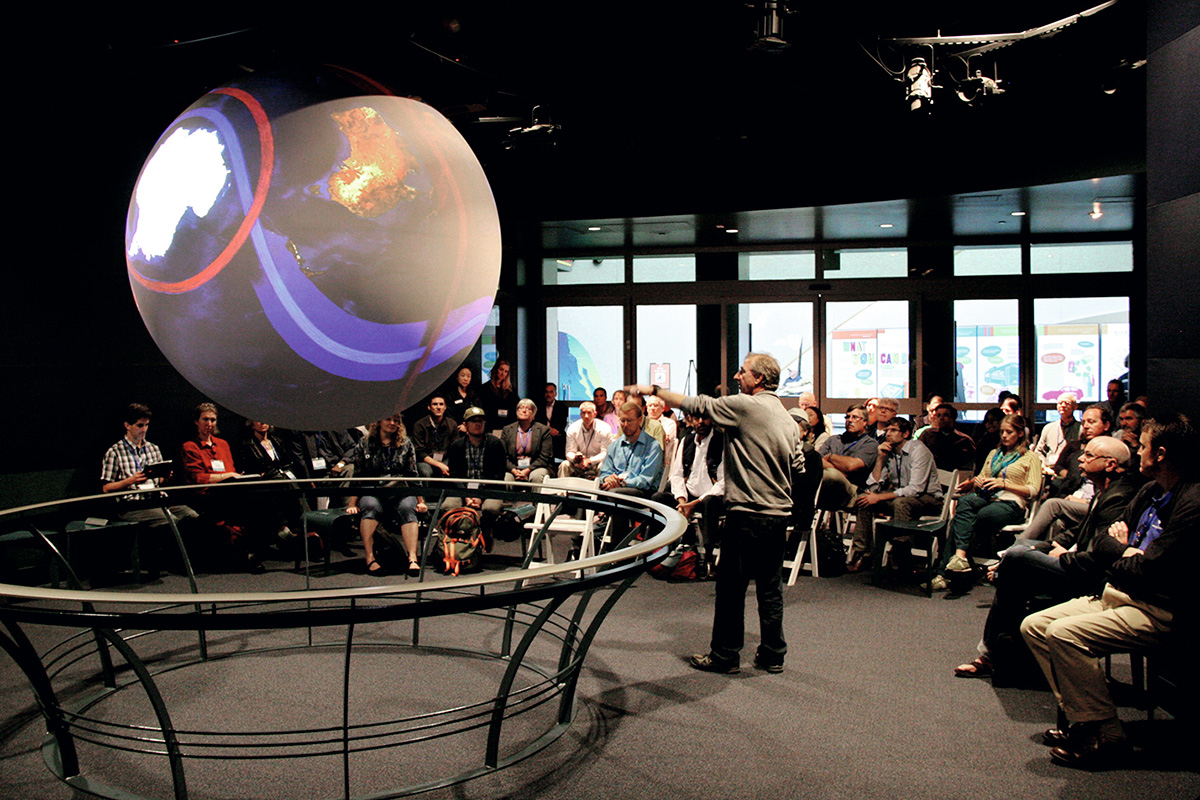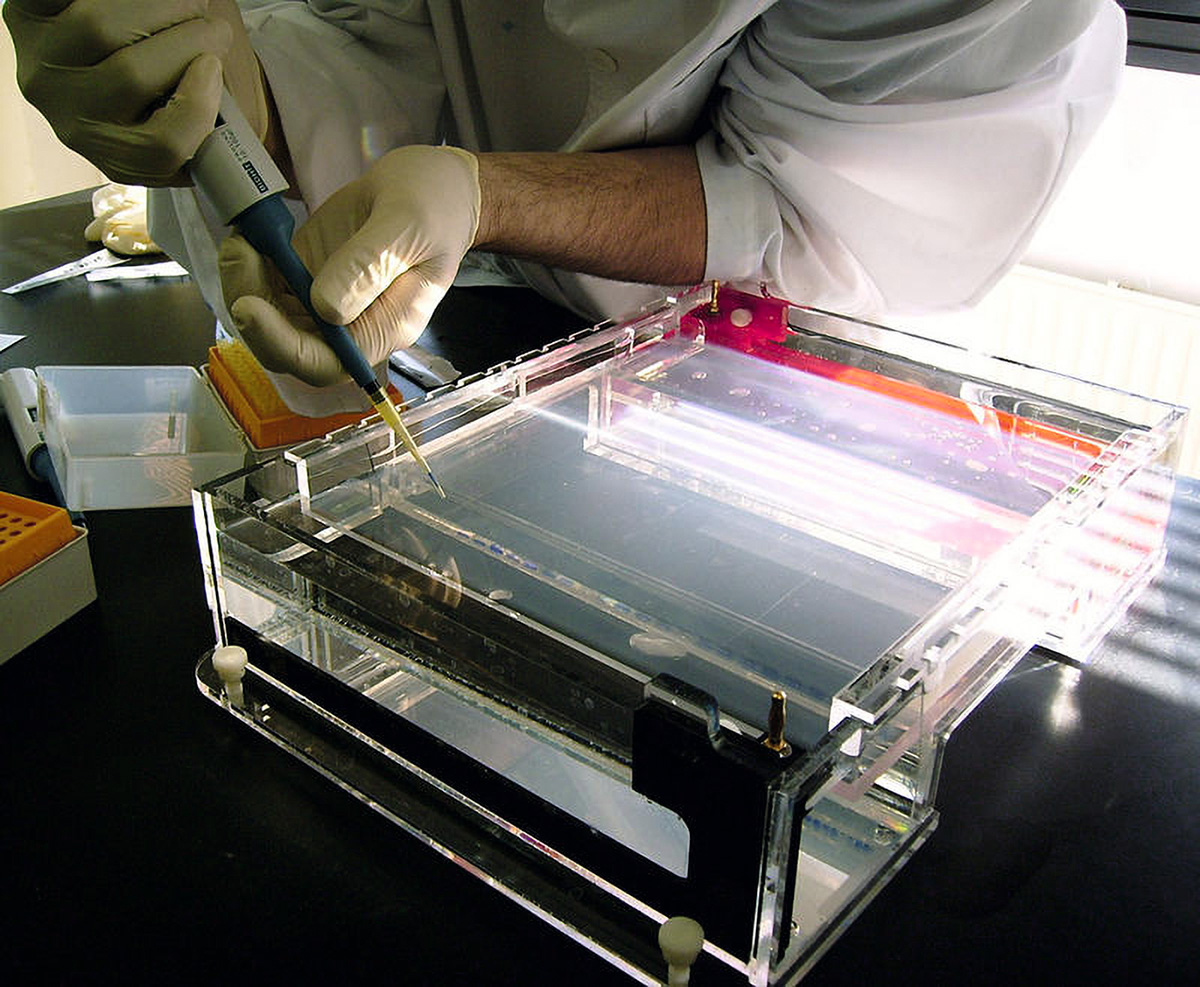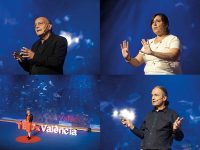Biotechnology and communication in democratic societies
Old challenges for a new era

Biotechnological research has made significant progress; however, some of its results are controversial because of their health and environmental risks, and these limit their application because of the precautionary measures applied to them. The dissemination and communication of information about biotechnology is now more necessary than ever to spread knowledge about innovations clearly, rigorously, and comprehensibly. At the same time, we must also inform about the certainties, uncertainties, and potential conflicts of interest these technologies pose in order to properly disseminate the available scientific evidence and promote autonomous, free, and informed decision-making: a key objective in any democratic society.
Keywords: science law, popularisation, science communication, journalism, biotechnology.
Science communication, an essential task
Article 20.1b of the Spanish constitution (Constitución española, 1978) establishes the fundamental right to scientific and technical creation and production, traditionally analysed by legal doctrine as the freedom of scientific research (Chueca, 2013). Likewise, article 27.1 of the Universal Declaration of Human Rights (United Nations, 1948) recognises that every person has the right to participate in the cultural life of the community, to enjoy the arts, and to share in scientific advancement and its benefits. In addition, the International Covenant on Economic, Social, and Cultural Rights (United Nations, 1966), ratified by Spain, compels members to undertake steps necessary for «the conservation, the development and the diffusion of science and culture».
«Participating in scientific progress and its benefits is a human right»
Therefore, participating in scientific progress and its benefits is a human right that must be understood as a key tool to promoting the freedom to develop personality and guarantee human dignity as a fundamental pillar of the legal system and as a criterion for the substantiation of values, principles, and rights. The adequate dissemination of research results helps citizens to freely and autonomously choose how to live their lives according to their own goals and interests. Likewise, it is important to promote channels which allow participation in science policy, because these have a social and economic impact on individuals.
In article 44.2, within the principles that guide social and economic policy, the Constitution also recognises that public authorities should promote science and scientific and technical research for the benefit of the public interest. The Spanish regulatory framework for research was completed when Law 14/2011 of 1 June, on Science, Technology and Innovation (2011) came into effect and, in so, repealed Law 13/1986 of 14 April, on the Promotion and General Coordination of Scientific and Technical Research. The preamble states that «the generation of knowledge in all areas, its dissemination and its application to obtain a social or economic benefit are essential activities for the advancement of Spanish society». This non-dispositive section also reminds us of the role of research, its dissemination, and transfer as «essential elements of modern culture, whose intention is to choose its goals and make decisions governed by reason and critical thinking».
Among its objectives, the science act (Law 14/2011) includes the promotion of «scientific, technological, and innovative culture through education, training, and dissemination in all sectors and in society at large». In addition, the act tries to promote «the active participation of citizens in the field of research, development, and innovation, and the social recognition of science through the science education of society and technological and scientific dissemination». The law also highlights the publication of results by public officials in open-access repositories and recognises popularisation and scientific and technological culture tasks as being «consubstantial to the research career, in order to improve the understanding and social perception of scientific and technological questions and the sensitivity towards innovation, as well as the promotion of a higher citizen participation in this field».

The 2010 Eurobarometer analysed the social perception of biotechnology in the European Union. Most respondents were optimistic regarding this discipline (53 %), although the report also showed significant evidence of knowledge gaps. Most participants had never heard about emerging fields such as nanotechnology (55 %), biobanks (67 %), or synthetic biology (83 %). / Agencia Sinc
Scientific culture, an unresolved issue: The case of biotechnology
Scientific and technical research influences society more and more; however, its advances and progress have not been accompanied by a gradual increase in the scientific culture of the population. According to the Royal Spanish Academy (Real Academia Española, 2017), culture can be interpreted as «the set of knowledge that allows people to develop their critical judgement» and as «the set of lifestyles and habits, knowledge and degree of artistic, scientific, and industrial development in a given time, social group, etc.». According to Emilio Muñoz (2002), both meanings remind us that culture – and scientific culture – depends on the level of knowledge of an individual about a specific topic, which in turn requires two fundamental mechanisms: education and information.
Scientific culture is still an unresolved issue in Spain. The VIII Survey of Social Perception of Science (Fundación Española para la Ciencia y la Tecnología [FECYT], 2017), shows that the Spanish population’s interest in research has increased in recent years, reaching 16.3 % in 2016. However, the percentage of people who show little or no interest in science is still higher (29.6 %); among them, the reasons for the lack of interest are fundamentally related to the fact that people do not understand the concepts related to research (33.1 %). The FECYT’s report also highlights the fact that Spanish citizens rely, to varying degrees, on practices not supported by scientific evidence, such as homeopathy (52.7 %) and acupuncture (59.8 %). There is no proven correlation, however, between relying on these pseudotherapies and a low educational level. According to the Survey of Social Perception of Science, people with a higher level of education trust, more than the average amount, in such practices lacking scientific evidence. Thus, these figures indicate that dissemination of research in Spain still has a lot of room for improvement.
On the other hand, the 2010 Eurobarometer (European Commission, 2010) analysed the social perception of biotechnology in the European Union. Most respondents were optimistic regarding this discipline (53 %), although the report also showed significant evidence of knowledge gaps. In this sense, most participants had never heard of emerging fields such as nanotechnology (55 %), biobanks (67 %), or synthetic biology (83 %). The Eurobarometer also revealed that there is a general mistrust among Europeans regarding genetic engineering. Genetically-modified foods were rejected by 61 % of respondents; and surveyees were also more reluctant to manipulate animals than plants and bacteria. Emilio Muñoz (2002) reminds us that biotechnological applications have traditionally been better received when they are related to human health. Nonetheless, in his opinion, claims that the ultimate implicit self-interest of the user can explain this phenomenon is, at the very least, naive and inconsistent. On the other hand, Gaskell (2000) argues that social support for biotechnology could vary between European countries because of their different policies regarding economic growth, although his argument has been criticised as being insufficient.
Interpreting results regarding the attitudes towards science and biotechnology is an arduous and complex task. According to Muñoz, positive and negative cognitive elements and different trajectories in the spread of information or cultural and social values, are some of the parameters that influence the acceptance of biotechnology. In Spain, where public perception is generally positive, several factors can be identified, including the limited public level of knowledge and continued investment in modernisation as the future, and risk-taking. In this sense, the BBVA Foundation’s International Study of Scientific Culture (Fundación BBVA, 2012) confirms the idea that the level of scientific culture in Spain is low. While Spain is close to the European average in the level of interest in science, the Spanish society feels that the information they receive on scientific matters is lacking compared to their neighbouring countries. In addition, in Spain, as also in Italy and the Czech Republic, science is not present in everyday conversations with family and friends, whereas in Denmark, the United Kingdom, and the Netherlands science is more present in everyday life.
«Disseminating knowledge also involves contextualising it, explaining the possibilities and limitations of the scientific method»
Biotechnology communication
The process of scientific dissemination can be described as a chain with connected and interdependent links; these would include scientific popularisation, communication, and information. Popularisation tries to explain research in a simple and entertaining way; communication departments spread the messages of their institutions and companies, and finally, the media must inform in a rigorous, clear, critical, and truthful way. If any of the links fail, the entire process of scientific dissemination will be affected.
We can cite two main problems related to Spanish scientific popularisation. On the one hand, the number of communicators has been rather low for years, and their work has gone unnoticed. On the other, in some cases, researchers want to stay in their «ivory tower» or do not communicate their results well to laymen. Likewise, scientific popularisation can also be affected by research malpractice, which sometimes includes frauds, lack of integrity, plagiarism, or misconduct. Among the most talked-about scandals in recent years, is the fraudulent study published by Andrew Wakefield et al. (1998) in The Lancet. It postulated an alleged connection between vaccines and autism, which was later refuted by scientific evidence (Taylor, Swerdfeger, & Eslick, 2014).
The researcher was accused of manipulating the data in bad faith and was subsequently expelled from the UK General Medical Council (Deer, 2011). Another controversial case was that of the South Korean scientist Woo Suk Hwang (Hwang et al., 2004), who claimed in Science that his team had managed to clone human embryos (De Semir & Revuelta, 2005), but his data was later proven to have been manufactured. This type of scandal puts the peer-review process of scientific journals into question and affects the beneficial work carried out to popularise, communicate, and report science.
Regarding the second link in the chain, press offices often lack adequate resources to properly communicate and advertise the work carried out by their respective research centres, universities, and companies. Occasionally, errors in their communication can also directly damage reporting. This happened, for instance, after University College London published a press release about the results of a study on the possible transmission of the amyloid beta pathology which included the word Alzheimer in the headline (University College London, 2015), even though the original scientific article (Jaunmuktane et al., 2015) did not refer to this neurodegenerative disease. This caused great confusion in the media at large and the next day, many British newspapers published alarmist headlines falsely concluding that Alzheimer’s disease was contagious. This is just one example of malpractice. Nevertheless, this type of work has gradually improved in recent years thanks to the increased number of specialised professionals, the increase in units devoted exclusively to communication within institutions, companies, research and development centres, or units, and to the activity of the communication associations working in these areas. The latter include the Spanish Association for Scientific Communication, the Catalan Association for Scientific Communication, the National Association of Health Communicators, and the Association of Biotechnology Communicators, among others.

In 2015, University College London published a press release about the possible transmission of the amyloid beta pathology which included the word Alzheimer in the headline, even though the original research article did not refer to this neurodegenerative disease. This caused great confusion in the media, and the next day, many British newspapers published alarmist headlines falsely concluding that Alzheimer’s disease was contagious.
Finally, the media frequently make serious science-reporting mistakes. The most common problems include not properly contrasting and contextualising before publishing, exaggerating results, and sensationalism. In the most serious cases, a journalistic failure to properly confirm or contrast information has helped to spread false or exaggerated stories. This recently occurred in Spain with the infamous Nadia case: for eight years, and with the help of coverage from several general media outlets, Nadia’s parents raised more than a million euros for a non-existent treatment for her disease, trichothiodystrophy. However, the deceit was unveiled in 2016 by other specialised media such as Mala Prensa, Hipertextual, and Materia, who called the entire story into question; after these journalistic revelations, the girl’s parents were investigated for alleged continuing fraud. The prosecutor has asked for a sentence of six years’ imprisonment, and the case still awaits trial. Apart from this case, the media have also made many recent claims that a cure for cancer or a vaccine against HIV have been found, even though, unfortunately, these are still not possible.
It is fundamental that specialised biotechnology reporting must disseminate the available scientific evidence while also discussing its limitations, conflicts of interest, and associated risks. In this sense, the media must play an active role in contrasting and publishing information related to therapies that lack any scientific evidence and which systematically use misleading advertisements, because these can pose a risk to patients. Moreover, as part of what is also known as the «fourth estate», we must not forget the need to communicate the ethical, social, economic, legal, or political implications (among other aspects) of biotechnology. Ultimately, the need to promote specialised journalism that publishes verified, rigorous, critical, clear, and truthful information and to avoid reporting wrong or sensationalist headlines and texts is more vital than ever.
Conclusions
The complexity of properly disseminating scientific advances is enormous. The number of research projects and publications has grown exponentially in recent years, as has the difficulty in understanding their results. According to Manuel Calvo Hernando (1999), different needs make this process even more difficult. Among them, we can highlight the importance of spreading and popularising knowledge, turning science into a matter of public and general interest, showing the differences between the imagined and real, and looking for fast and safe systems to store and access knowledge.
Disseminating knowledge also involves contextualising it, explaining the possibilities and limitations of the scientific method, and the realities and myths about research results, and to communicate scientific evidence, the importance of research integrity and reporting any conflicts of interest. Dissemination, communication, and science reporting, particularly when related to biotechnology, are now more necessary than ever to promote critical thinking among the layman audience.
«The media must play an active role in contrasting and publishing information related to therapies that lack any scientific evidence»
Our societies have the right to enjoy scientific progress and the benefits resulting from it, as well as the opportunity to gain the perspective of knowledge and participation in public decision-making. The adequate dissemination of science will help achieve these goals and at the same time increase citizens’ interest in research, education, and culture. The work of scientists, communicators, and specialised journalists is also fundamental to ensuring human dignity and the free development of personality. This task is not without challenges, obstacles, and problems, but its results will help to promote fundamental rights and public liberties and will ultimately strengthen our democratic society.
Constitución española, de 29 de diciembre. (1978). Retrieved from https://www.boe.es/buscar/pdf/1978/BOE-A-1978-31229-consolidado.pdf
Calvo Hernando, M. (1999). El nuevo periodismo de la ciencia. Mexico: Ediciones Ciespal.
Comissió Europea. (2010). Special Eurobarometer. Biotechnology. Brussels: TNS Opinion & Social. Retrieved from http://ec.europa.eu/commfrontoffice/publicopinion/archives/ebs/ebs_341_en.pdf
Chueca, R. (Dir.). (2013). La investigación científica como derecho fundamental. Granada: Editorial Comares.
Deer, B. (2011). How the case against the MMR vaccine was fixed. British Medical Journal, 342, c5347. doi: 10.1136/bmj.c5347
De Semir, V., & Revuelta, G. (2005). El Dr. Hwang y el clon que nunca existió. Quark, 37–38, 105–123.
Fundación BBVA. (2012). Estudio internacional de cultura científica de la Fundación BBVA. Retrieved from www.fbbva.es/TLFU/dat/comprension.pdf
Fundación Española para la Ciencia y la Tecnología. (2017). VIII Encuesta de percepción social de la ciencia, 2017. Madrid: Editorial MIC. Retrieved from https://www.fecyt.es/es/publicacion/percepcion-social-de-la-ciencia-y-la-tecnologia-en-espana-2016
Gaskell, G. (2000). Agricultural biotechnology and public attitudes in the European Union. AgBioForum, 3(2&3), 87–96. Retrieved from http://www.agbioforum.org/v3n23/v3n23a04-gaskell.htm
Hwang, W. S., Ryu, Y. J., Park, J. H., Park, E. S., Lee, E. G., Koo, J. M., … Moon, S. Y. (2004). Evidence of a pluripotent human embryonic stem cell line derived from a cloned blastocyst. Science, 303(5664), 1669–1674. doi: 10.1126/science.1094515 (Retracted in 2006, Science, 311(5759), 335. doi: 10.1126/science.1124926).
Jaunmuktane, Z., Mead, S., Ellis, M., Wadsworth, J. D. F., Nicoll, A. J., Kenny, J., … Brandner, S. (2015). Evidence for human transmission of amyloid-β pathology and cerebral amyloid angiopathy. Nature, 525, 247–250. doi: 10.1038/nature15369
Ley 14/2011, de 1 de junio, de la Ciencia, la Tecnología y la Innovación (2011). Retrieved from https://www.boe.es/buscar/pdf/2011/BOE-A-2011-9617-consolidado.pdf
Muñoz, E. (2002, 30 May). La cultura científica, la percepción pública y el caso de la biotecnología. Seminario «La cultura científica en la sociedad de la información», Universidad de Oviedo. Retrieved from http://digital.csic.es/bitstream/10261/1503/1/dt-0207.pdf
Nacions Unides. (1948). Declaración universal de derechos humanos. Retrieved from http://www.un.org/es/universal-declaration-human-rights
Nacions Unides. (1966). Pacto internacional de derechos económicos, sociales y culturales. Alto Comisionado para los Derechos Humanos (ACNUDH). Retrieved from http://www.ohchr.org/SP/ProfessionalInterest/Pages/CESCR.aspx
Real Academia Española. (2017). Cultura. En Diccionario de la lengua española (23ª ed.). Retrieved from http://dle.rae.es/?id=BetrEjX
Taylor, L. E., Swerdfeger, A. L., & Eslick, G. D. (2014). Vaccines are not associated with autism: An evidence-based meta-analysis of case-control and cohort studies. Vaccine, 32(29), 3623–3629. doi: 10.1016/j.vaccine.2014.04.085
University College London (2015, 10 September). Possible evidence for human transmission of Alzheimer’s pathology [press release]. Retrieved from http://www.ucl.ac.uk/news/news-articles/0915/100915-possible-evidence-alzheimers-pathology
Wakefield, A. J., Murch, S. H., Anthony, A., Linnell, J., Casson, D. M., Malik, M., … Walker-Smith, J. A. (1998). Ileal-lymphoid-nodular hyperplasia, non-specific colitis, and pervasive developmental disorder in children. The Lancet, 351(9103), 637–641. doi: 10.1016/S0140-6736(97)11096-0 (Retracted in 2010, The Lancet, 375(9713), 445. doi: 10.1016/S0140-6736(10)60175-4).





